Luke Ramsay: Catamaran Convert
Published on March 13th, 2016
Sail Canada has selected Luke Ramsay (27 years) and Nikola Girke (37 years) as their representative in the new Nacra 17 event at the 2016 Olympic Games. Scuttlebutt editor Craig Leweck met up with Luke, who was named 2015 Sail Canada of the Male Athlete of the Year, for an update…
What is your background with Olympic sailing?
I sailed Lasers from about 16 to 22, 23 year and I did the trials for the 2008 Games. But I was at university and not fully committed, and Mike Leigh went instead. We were competing against each other in Lasers again toward the 2012 Games when in January 2011 Mike hurt his back and he proposed a crazy idea that we sail 470s together.
So, it was at the 2011 Sailing World Cup Miami when we decided after that event we would sail 470s together, and then we spent a year and a half training, competing in 470s, and getting ready for the 2012 Olympics. We qualified about two months before the Games, so it was really an express program, but it was a huge learning experience going from Lasers to 470s which has helped me now transition to the Nacra 17.
Why didn’t you continue with the 470?
Mike was at a little different place in his life. He was starting a family and wanted to go back to university. He decided not to go to university out of high school, focusing on the Laser and did really well for himself, but he’s always wanted to get back to school. So I considered my options, which included the opportunity to sail with Nikola in the Nacra 17.
This was an exciting opportunity, because she’s a really good sailor, she’s been to three Games in the boardsailing event, and I looked up to her as a sailor. The opportunity to sail with her in this new class was really fun and exciting and I thought we could go quite far with it. The combination of not really having another step in the 470s and then this prospect made the switch a no-brainer.
Plus the Nacra 17 is pretty fun to go training on.
Oh my gosh! So much fun. Every day is a blast. Even now, after three years of doing it, I love every second of it.
But tackling this new challenge has been a motivating factor too?
Definitely. Both Nikola and I both got into it looking for something new, and a new challenge, but I think we were a little taken aback by how different the catamaran world is, and also how different these boats are to the cat world. It took us a long time to figure out the nuances of the boat. Thankfully, I think it took the whole fleet a long time as well.
What are some of the prominent differences to figure out?
Obviously they are quite fast and there are tactical differences in how to compete because of the lack of maneuverability, but also the physical differences in how to sail the boats. They respond way different than a monohull. In a monohull, you have a lot of feedback because it’s so tippy. You know when you’re out of sync quite easily, but in the Nara 17 the nuances are a little more difficult.
One of the difficult aspects that we struggled with a lot is they’re really powered up and there’re crashes associated with that. But unlike a lot of other boats where you crash when it’s breezy, but usually because you’re going too slow, for us often it’s quite the opposite. So the problem is when you crash, you’re crashing at top speed and we’ve had to deal with injuries and equipment damage. It’s really challenging and both Nikola and I have learned a lot about each other and about sailing with the opposite sex. The mixed team is something completely different that not a lot of people experience but it’s really cool.
There seems to be a lot of crashes rounding the weather mark.
The photo boats love it there.
So learning how not to crash has been critical?
Definitely. There were a few teams who came in with really good catamaran experience and a good idea of how the boats were sailing and how to deal with the curved daggerboards. It’s taken the rest of the fleet quite a while to catch up but now I feel like we’re getting closer and closer. I think the next six months is going to be a really exciting time, especially for us. We’ve put in lots of training last fall and we’re going to start to be closer to where we want to be in the next couple months.
I have heard how Nacra 17 sailing is like riding a unicycle.
It’s definitely challenging and you need to recognize the limits. If you want to sail with maximum lift, you put the boards all the way down and stand all the way back. The boat’s going to fly, but there’s much you can do to control that, and sooner or later you’re going to crash.
But not only crash during racing, which can be quite a dangerous because you’re going really fast, but even if you don’t crash but have a moment where you drop hard off the foils and hit the water, the boat slows quickly and you might get rolled by three or four boats. So any gains from the full lift mode can be easily negated.
It’s a balance of not just trying to foil, but also trying to have a good all-around speed. I think the fleet is getting an understanding of when to push and when to hold back, but it’s really tricky. It’s hard. You can’t look around, you can’t do other things when you’re trying to push the foiling mode. You just have to focus on that, and that makes racing really difficult.
Describe a classic wipe-out moment.
Probably the most classic is when you push it too hard downwind. You’ll get your weight too far back or a puff will hit and you’ll have under-trimmed or over-trimmed the kite or the mainsheet, and the bow will rock back, which then essentially increases the AOA – the angle of attack – on the foils. The next thing you know the boat just shoots out of the water and you are fully launched.
We’ve seen all foils, rudders, everything come out, but then you smack back down, and as the skipper you’ve got to brace for impact because nine times out of ten, the crew will get whipped forward and then hit the water, and then come back and come back at you. So you’ve got to drop your shoulder and brace for impact. After we collide, we ask each other if we’re okay, and then you get back on the boat and keep ripping.
So the boat lands pretty well after getting air?
It’s actually not too bad. The worst is when you don’t have enough lift and you hit a bad wave, or you’re coming down off of a really big wave, and you stuff the bows into it. When that happens, when the bows go down, you get negative AOA. So instead of the boards helping you fly, they’re sucking you down into the water. We saw that during the America’s Cup in San Francisco, when New Zealand’s foils went wrong around the top mark and they went down, how quickly the bow will sink. When you get that negative lift, it’s trying to pull everything down, and that’s when, usually, we see in the Nacra 17 the catastrophic pitch-pole.
Has the debate been settled on the perfect male-female role on the Nacra 17?
No, the debate continues. The crew position is really difficult, and that’s one reason why it’s such a pleasure to sail with Nikola because she’s a super athlete, super physical, really strong and so she can go toe to toe with anybody. But the initial thinking was that it would be smarter to have a male crew who was really strong, really fit, pulling from another boat like an F-18 or a 49er, and then have a female driver who could do a little more finesse. However, interestingly, a lot of the fleet has actually gone the other way.
I think one of the reasons for that is the catamaran experience in the world was pretty much male dominated. From the Tornados, there was no real female component there, and so guys like Billy Besson who has now won the last four Nacra 17 World Championships, and who sailed Tornados for a long time, 12 or 14 years, was able to convert all that knowledge into this class immediately and cut a lot of corners that us coming from monohulls took time to go through.
I think that’s one of the reasons why we saw a spike in how well the male drivers are doing, but now I think the fleet might be evening out a little more as the female drivers start to figure things out. Over the years, it’s sort of balancing itself out in the top ten.
I heard a better rudder design would stabilize the boat. Any talk of this change for the future?
There’s a whole lot of rumors going around. Everything from changing the rudder slightly to keeping it the same to making the boats fully foiling. But to be honest, the build quality of the boat is not too good, so if they were to say add winglets on the rudders, they would have to reinforce the transoms, and maybe change the laminate schedule of other places on the boat.
On our current boat we’ve had cracking down one of the hulls that had to get professionally repaired. It’s a concern in that the build quality isn’t as high as they would have liked. It seems every couple months they’re updating how well they’re built, and they’re updating the fittings and this and that.
I feel like right now, the boats are in a good spot, that they can be pushed really hard by Olympic sailors, and if they try and improve their foiling ability, or change too much of anything else, they’re going to repeat the same mistakes and they’re going to have to start over again. They’re going to have to change the rigs because they will break. They’re going to have to change transoms. They’re going to have to change laminate schedule, reinforce the hulls, and it’s not really going to be a Nacra 17 anymore, despite what they call it.
The Nacra 17 design came before the foiling era really took off, but I suspect everyone is getting better at mastering whatever instability is inherent in the boat.
Exactly. If they kept the Nacra 17 as is for one more quad, I think you’d see the boats being pushed really hard, there won’t be nearly as many breakages or growing pains, and I think it would be so something people really enjoy. But beyond 2020, there needs to be an effort next year to start developing a foiling boat and give a thorough testing so it is ready to go for the 2024 quad.
This is the first quad for the Nacra 17. It was a brand new boat and it was not fully vetted when this quad began. There have been problems from its launch, but it is nearly sorted out now. If they try and make a rash change now for 2020, I think we’ll end up with a lot of problems again.
For a manufacturer class, the changes must be frustrating.
Absolutely, and the more stable the class is in terms of the build quality, the better the racing becomes, and the more people you encourage to come into the class because they know they’re not having to buy a new boat every year. The Tornado guys were the first ones to say this because you heard about boats winning the Olympics being four or eight years old. The build quality was really there. You could buy one boat for your campaign and that was it. That would be a real luxury for any Olympic class these days.
Do you consider yourself a catamaran sailor now?
Oh, I love it. Now I have an A Class catamaran too. I am fully in this world now, and while I still love to hop in slow boats, if it’s not a really good regatta there’s no way I’d sail anything else.


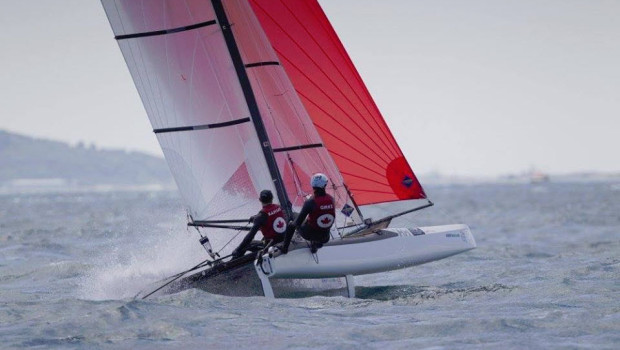
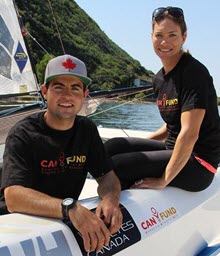

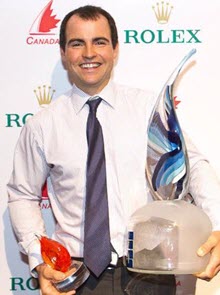

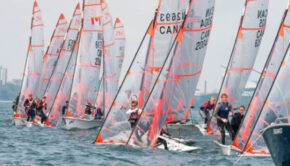
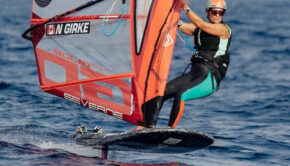
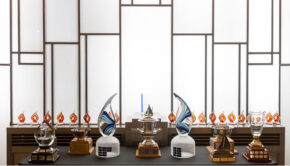
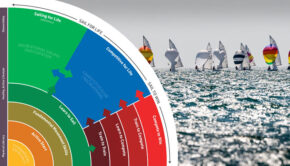
 We’ll keep your information safe.
We’ll keep your information safe.